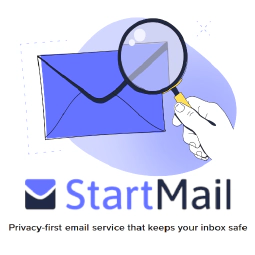What to do when you’ve been doxxed: A Comprehensive Guide

Table of Contents
What to do when you’ve been doxxed
Doxxing, the act of publicly revealing someone’s private or personal information without their consent, has become a growing concern in the digital age. With the increasing amount of personal information available online, it has become easier for malicious individuals to obtain and expose sensitive details about individuals. If you find yourself in the unfortunate situation of being doxxed, it’s important to take immediate action to protect yourself and mitigate the potential damage. This article will guide you through the steps you should take when you’ve been doxxed.
Introduction
Doxxing can have severe consequences, ranging from invasion of privacy to harassment, stalking, and identity theft. It’s crucial to respond promptly and effectively to minimize the impact on your personal and professional life. Here are the steps you should follow when dealing with a doxxing incident.
The Threats of Having Your Information Leaked Online
When your personal information is leaked online through doxxing, it exposes you to various threats and risks that can have serious consequences. Here are some of the key threats you may face:
1. Swatting
Swatting is a dangerous and potentially life-threatening hoax in which someone makes a false emergency call, typically to law enforcement, with the intent of having a heavily armed police response sent to the victim’s location. This malicious act can result in physical harm, property damage, and extreme emotional distress.
2. Identity Theft
One of the most significant risks of having your information leaked is identity theft. Cybercriminals can use your personal details, such as your name, address, Social Security number, or financial information, to commit fraud, open fraudulent accounts, or make unauthorized purchases. Identity theft can lead to significant financial losses and damage to your credit score.
3. Hacking and Cyberattacks
When your personal information is exposed, it becomes easier for malicious individuals to hack into your accounts or devices. They can gain unauthorized access to your email, social media, or financial accounts, compromising your digital life. Cyberattacks can also lead to the loss of sensitive data, including confidential work documents or personal photographs.
4. Harassment and Stalking
Doxxing opens the door for harassment and stalking. Attackers can use the leaked information to harass you through various means, such as sending threatening messages, making harassing phone calls, or even showing up at your doorstep. This invasion of privacy can cause immense fear, stress, and disruption in your daily life.
5. Robbery and Physical Harm
In some cases, doxxing can expose your physical location or other sensitive details, making you vulnerable to robbery or physical harm. Malicious individuals can use the leaked information to plan and execute criminal activities, posing a direct threat to your safety and well-being.
6. Reputation Damage
Having your personal information leaked can tarnish your reputation both personally and professionally. False information or misleading claims may be associated with your name, leading to misunderstandings or damaging your relationships. Rebuilding your reputation can be a lengthy and challenging process.
It’s important to recognize these threats and take immediate action to protect yourself when you’ve been doxxed. By following the steps outlined in this article, you can minimize the impact of doxxing and mitigate the risks associated with the exposure of your personal information.
What to do if you’ve been Doxxed
1. Stay calm and assess the situation
The first and most important step is to remain calm and composed. It’s natural to feel anger, fear, or anxiety when your personal information is exposed without your consent, but panicking won’t help. Take a moment to gather your thoughts and evaluate the extent of the doxxing.
For example, if your home address has been revealed, consider the potential risks associated with that information. Are you at risk of physical harm or harassment? Understanding the specific risks will help you determine the appropriate actions to take.
Assess what information has been leaked and how it may potentially harm you. This may include your full name, address, phone number, email address, or other sensitive details. The more comprehensive the doxxing, the higher the potential risk.
Remember, the goal is to respond in a calm and calculated manner, ensuring your actions are effective in mitigating the impact of the doxxing incident.
2. Document the doxxing evidence
It’s crucial to collect evidence of the doxxing incident for future reference. Take screenshots or save copies of any posts, messages, or websites that contain your exposed information. This evidence will be valuable if you decide to report the incident to law enforcement authorities or take legal action against the doxxer.
For example, if someone has shared your personal information on a social media platform, take a screenshot of the post showing the details that have been exposed. If you received threatening messages or emails, save copies of those as well. These pieces of evidence will help establish the nature and extent of the doxxing, making it easier for authorities to investigate and potentially hold the responsible party accountable.
Remember to preserve the original evidence and make backups of the files. This ensures that the information remains intact and admissible, should you need to provide it to law enforcement or legal professionals.
If you’re unsure how to capture screenshots on your device, refer to the documentation provided by the manufacturer or search online for specific instructions based on your device and operating system. Otherwise, please see the following article .
3. Remove personal information from public platforms
Take immediate action to remove your personal information from public platforms, such as social media, websites, or online directories. Disable or restrict access to personal accounts, and consider temporarily deactivating your profiles until the situation is resolved.
For example, if your personal information is publicly visible on a social media platform, navigate to your account settings and restrict the visibility of your personal details, such as your address, phone number, or email address. Consider setting your profile to private to limit access to trusted individuals only.
Perform a search on popular search engines using your name and other relevant information to identify websites or online directories that display your personal information without your consent. Contact the website administrators and request the removal of the unauthorized personal information. Provide them with the necessary details and evidence to support your request.
Additionally, if you have any professional profiles on platforms like LinkedIn, review the information displayed and ensure that you’ve restricted access to sensitive details that could be used for malicious purposes.
By taking these steps, you reduce the accessibility of your personal information and make it more challenging for individuals to exploit it. Remember to regularly monitor your online presence to ensure that your information remains secure and protected.
Additional Reading For Step 3
4. Strengthen your online privacy and security
Enhancing your online privacy and security measures is crucial to prevent further doxxing attempts and protect yourself from potential harm. Consider implementing the following measures:
a. Review and update privacy settings
Review the privacy settings of your online accounts and ensure they are set to the highest level of protection. Limit the visibility of personal information and posts to trusted friends or connections only. For example, on social media platforms like Facebook, navigate to the privacy settings and customize who can view your profile, posts, and personal information.
b. Enable two-factor authentication (2FA)
Enable two-factor authentication (2FA) on all your online accounts whenever possible. 2FA adds an extra layer of security by requiring an additional verification step, usually through a mobile device, to access your accounts. Services like Google, Facebook, and Twitter offer 2FA options. Enable it by following the instructions provided by the respective platforms.
c. Use strong, unique passwords
Create strong and unique passwords for each of your online accounts. Avoid using common passwords or reusing passwords across multiple platforms. Consider using a password manager to securely store and manage your passwords. Password managers like LastPass, Dashlane, or 1Password generate and store complex passwords for you.
d. Be cautious with sharing personal information online
Avoid sharing sensitive personal information on public platforms or with unknown individuals. Be cautious when filling out online forms or engaging in conversations with strangers. Verify the legitimacy and security of websites or platforms before providing any personal details. For example, avoid sharing your full address or phone number in public forums or online communities.
e. Regularly update software and use antivirus protection
Keep your operating system, applications, and antivirus software up to date to ensure you have the latest security patches and protection against malware. Enable automatic updates whenever possible to stay protected against emerging threats. Install reputable antivirus software like Norton, McAfee, or Avast and perform regular scans to detect and remove any malicious software from your devices.
By implementing these measures, you significantly enhance your online security and reduce the risk of future doxxing incidents. Stay vigilant and proactive in protecting your personal information.
5. Report the doxxing incident
Reporting the doxxing incident to the appropriate authorities is an essential step to hold the doxxer accountable and potentially prevent future attacks. Contact your local law enforcement agency and provide them with all the evidence you have collected. They will guide you through the reporting process and investigate the incident further.
For example, in the United States, you can reach out to your local police department or sheriff’s office to report the doxxing incident. Provide them with a detailed account of the incident, including the evidence you have gathered, such as screenshots, messages, or any other relevant information.
In some cases, depending on the severity of the doxxing and the impact it has had on your life, you may need to involve other organizations or authorities. This could include reporting the incident to cybercrime units, such as the Federal Bureau of Investigation (FBI) or the Internet Crime Complaint Center (IC3) .
Remember to document all communications you have with law enforcement agencies, including the names of the officers or investigators you speak with and any case numbers provided. This will help you keep track of the progress of your case and provide additional information if needed.
Reporting the doxxing incident not only helps protect yourself but also contributes to creating a safer online environment for others.
6. Seek professional help and support
Dealing with the aftermath of a doxxing incident can be emotionally and mentally challenging. It’s important to seek professional help and support to cope with the situation. Consider reaching out to a therapist or counselor who can provide guidance and assist you in processing the emotional impact of the doxxing incident.
In addition, connecting with support groups or online communities of individuals who have experienced similar situations can be helpful. Sharing your experiences and learning from others can provide a sense of solidarity and valuable advice on navigating the aftermath of being doxxed.
If you’re unsure where to start, organizations such as the National Domestic Violence Hotline can provide resources and referrals to support services for victims of online harassment and doxxing. They offer confidential support and can guide you to appropriate professionals who specialize in dealing with the psychological impact of cybercrime.
Remember, seeking professional help and support is not a sign of weakness, but a proactive step towards healing and recovery. Don’t hesitate to reach out to trusted individuals and organizations to assist you during this challenging time.
7. Monitor your online presence
After a doxxing incident, it’s crucial to be vigilant about monitoring your online presence. Regularly search for your name and variations of it on search engines to see if any new information has been leaked. Set up Google Alerts to receive notifications whenever your name appears online. Being proactive in monitoring your online presence allows you to address any potential leaks promptly.
For example, if your name is John Doe, you can perform regular searches on search engines like Google using keywords such as “John Doe doxxed” or “John Doe personal information.” This helps you identify if any new information has been published without your consent.
Another useful tool is Google Alerts , which allows you to create custom alerts for specific keywords or phrases. Set up an alert with your name and other relevant information to receive email notifications whenever there are new search results containing your name.
It’s important to address any new leaks as soon as possible. Contact website administrators or platform moderators to request the removal of your personal information and follow the necessary steps to secure your online accounts.
By monitoring your online presence, you can stay informed and take prompt action to protect your privacy and security. Stay vigilant and proactive in managing your digital footprint.
8. Legal recourse and support
If the doxxing incident has caused significant harm or you believe your safety is at risk, consider consulting with a lawyer who specializes in cybercrime or privacy law. They can provide legal advice on your options for seeking justice and pursuing legal action against the doxxer.
Familiarize yourself with relevant government regulations, such as the General Data Protection Regulation (GDPR) in the European Union or the California Consumer Privacy Act (CCPA) in the United States, which may offer additional protections and avenues for recourse.
For example, under the GDPR, individuals in the European Union have the right to request the removal or rectification of their personal information from online platforms and the right to be forgotten. The CCPA grants California residents certain rights over their personal information, including the right to know what personal information is collected, shared, or sold by businesses.
By understanding and leveraging these regulations, you can strengthen your legal position and explore options for holding the doxxer accountable. A lawyer can guide you through the process and help you determine the best course of action based on your specific circumstances.
Remember, seeking legal recourse may involve time, effort, and potentially financial resources. Assess your situation and consult with professionals to make an informed decision about pursuing legal action.
Conclusion
Being doxxed is a distressing and potentially harmful experience. However, by following the steps outlined in this article, you can take control of the situation and protect yourself from further harm. Remember to:
- Stay calm and assess the situation.
- Document the doxxing evidence for future reference.
- Remove personal information from public platforms.
- Strengthen your online privacy and security measures.
- Report the doxxing incident to the authorities.
- Seek professional help and support to cope with the emotional impact.
- Monitor your online presence and address any new leaks promptly.
- Consider legal recourse and support if necessary, consulting with a lawyer and understanding relevant government regulations.
By taking these steps, you can regain your privacy and security in the digital realm. Remember, it’s important to prioritize your well-being and seek assistance when needed. Together, we can combat doxxing and create a safer online environment.
References
- Federal Trade Commission: Protecting Your Personal Information
- Electronic Frontier Foundation: Guide to Online Privacy
- General Data Protection Regulation (GDPR)
- California Consumer Privacy Act (CCPA)
- Google Alerts
- National Suicide Prevention Lifeline






